自定义持久层框架
1.回顾JDBC
创建自定义持久层框架前,让我们先来回顾一下,JDBC的操作:
public static void main(String[] args) {
Connection connection = null;
PreparedStatement preparedStatement = null;
ResultSet resultSet = null;
try {
//加载数据库驱动
Class.forName("com.mysql.jdbc.Driver");
//通过驱动管理类获取数据库链接
connection = DriverManager.getConnection("jdbc:mysql://localhost:3306/mybatis?" +
"characterEncoding = utf-8", "root", "root");
//定义sq1语句?表示 占位符
String sql = "select * from user where username = ?";
//获取预处理statement
preparedStatement = connection.prepareStatement(sql);
//设置参数,第一个参数为sq1语句中参数的序号(从1开始),第二个参 数为设置的参数值
preparedStatement.setString(1, "zhangsan");
//向数据库发出sq1执行查询,查询出结果集
resultSet = preparedStatement.executeQuery();
//遍历查询结果集
while (resultSet.next()) {
int id = resultSet.getInt("id");
String username = resultSet.getString("username");
user.setId(id);
user.setUsername(username);
}
System.out.println(user);
} catch (Exception e) {
e.printStackTrace();
} finally {
//释放资源
if (resultSet != null) {
try {
resultSet.close();
} catch (SQLException e) {
e.printStackTrace();
}
}
if (preparedStatement != null) {
try {
preparedStatement.close();
} catch (SQLException e) {
e.printStackTrace();
}
}
if (connection != null) {
try {
connection.close();
} catch (SQLException e) {
e.printStackTrace();
}
}
}
}
2.自定义框架设计
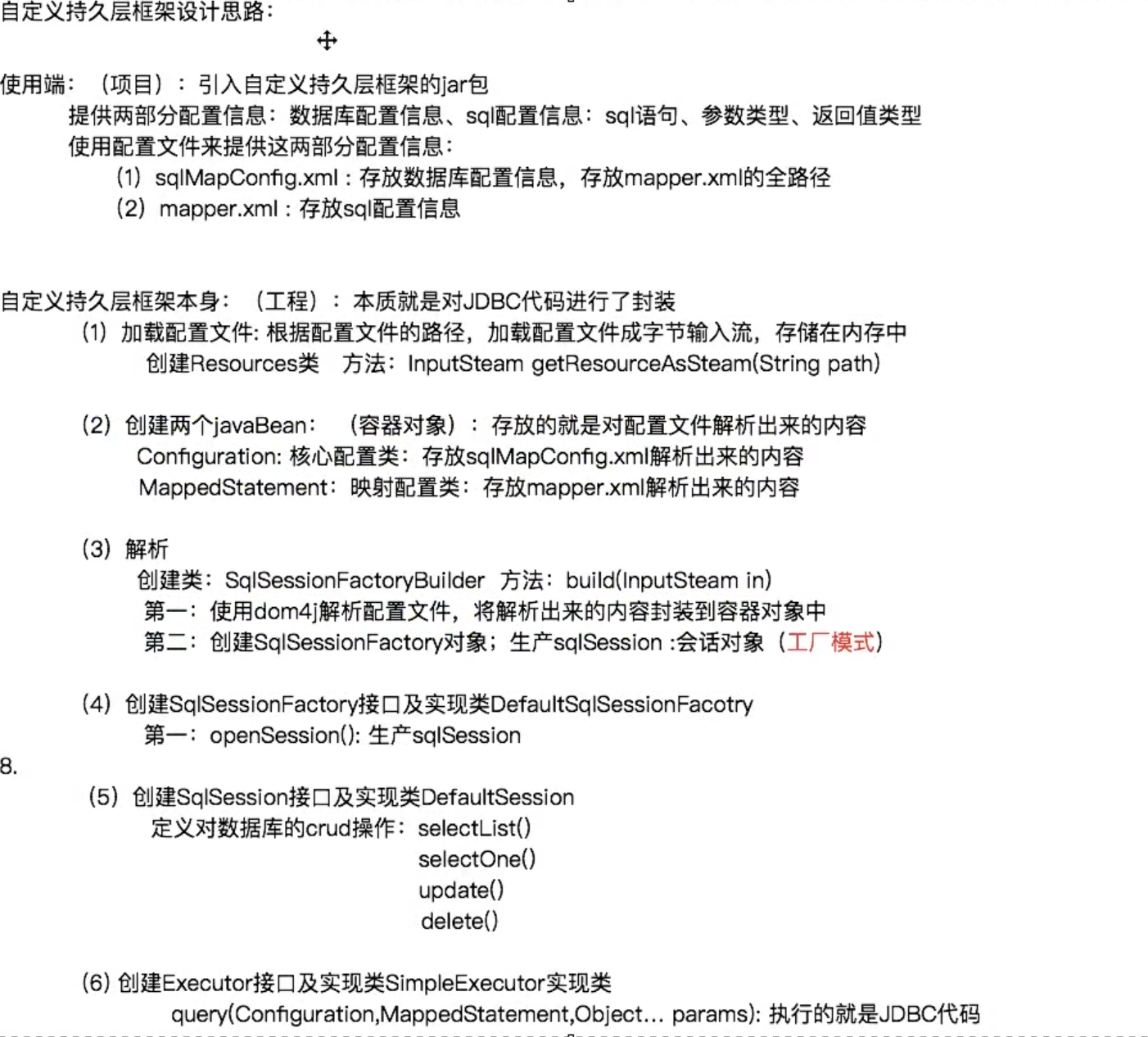
在开始上手之前,我先把我之前创建过的整个目录结构,给大家看一下,方便大家整体的去了解
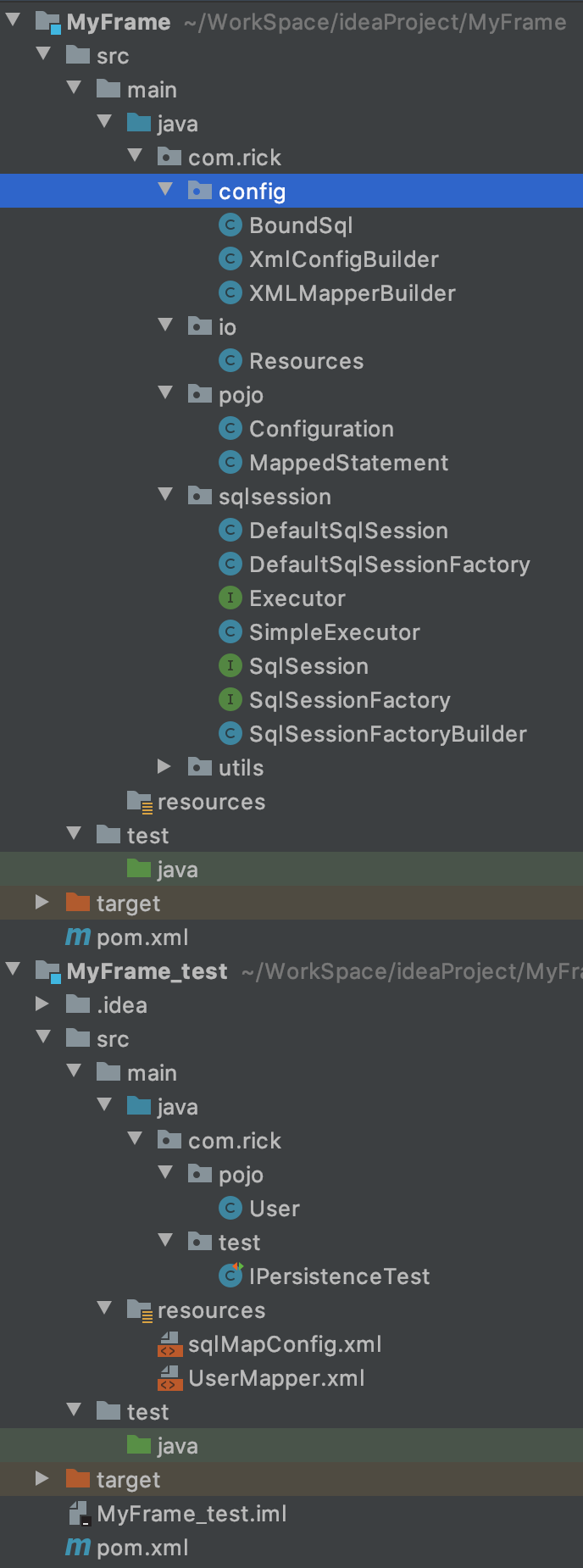
2.1 创建使用端项目
创建一个Maven项目,直接点击下一步
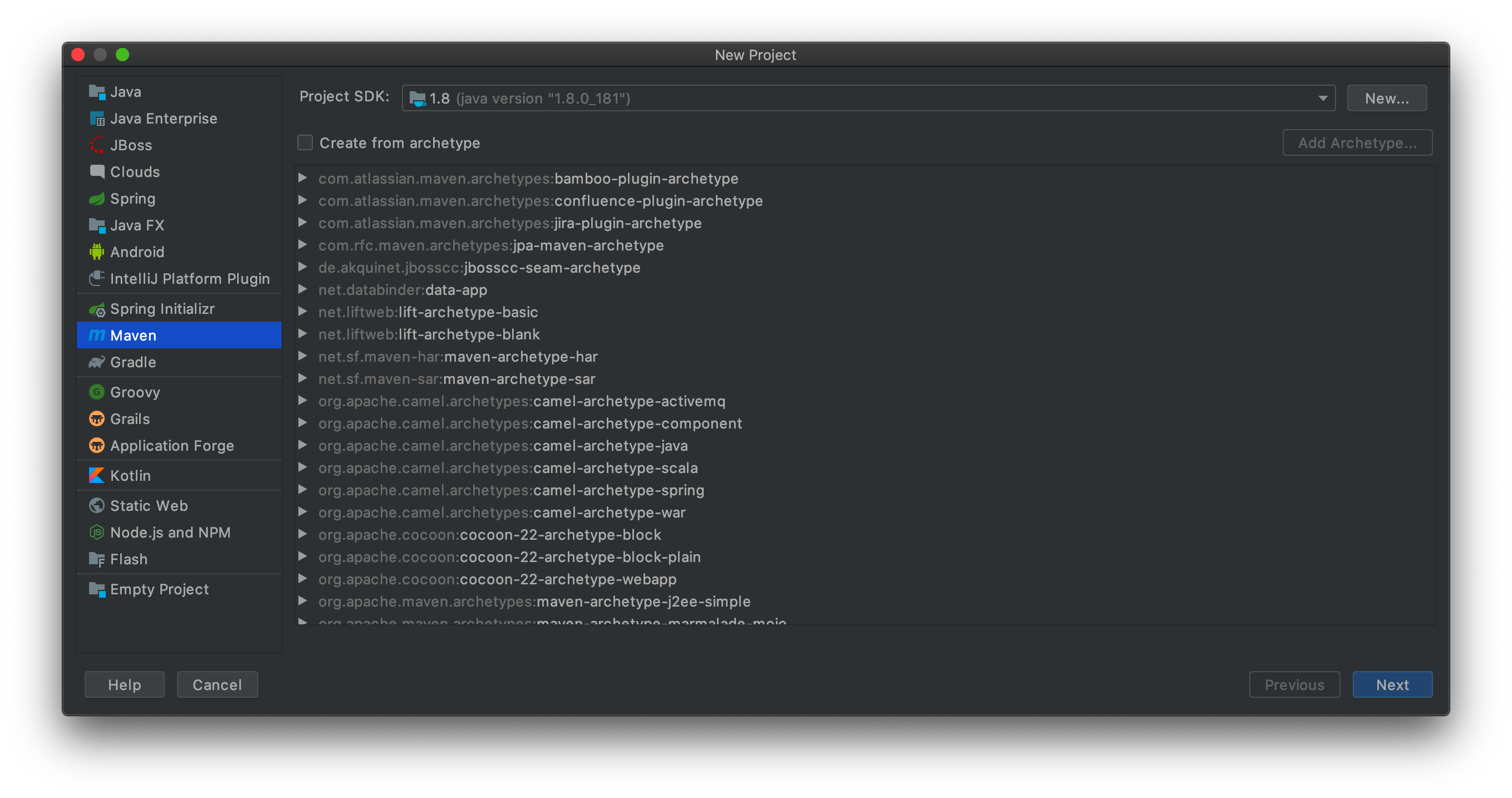
项目名称为:MyFrame_test,点击完成

在使用端项目中创建配置配置文件
在resources下创建sqlMapConfig.xml
<configuration>
<dataSource>
<property name="driverClass" valaue="com.mysql.jdbc.Driver"></property>
<property name="jdbcUrl" valaue="jdbc:mysql:///demo2"></property>
<property name="username" valaue="root"></property>
<property name="password" valaue="1q2w3e4r"></property>
</dataSource>
<mapper resource="UserMapper.xml"> </mapper>
</configuration>
在resources下创建UserMapper.xml
<mapper namespace="user">
<select id="selectList" resultType="com.rick.pojo.User">
select * from user
</select>
<select id="selectOne" resultType="com.rick.pojo.User" paramterType="com.rick.pojo.User">
select * from user where id = #{id} and username = #{username}
</select>
</mapper>
在com.rick.pojo包下创建User实体类
package com.rick.pojo;
/**
* @author rickqi
*/
public class User {
private Integer id;
private String username;
public Integer getId() {
return id;
}
public void setId(Integer id) {
this.id = id;
}
public String getUsername() {
return username;
}
public void setUsername(String username) {
this.username = username;
}
@Override
public String toString() {
return "User{" +
"id=" + id +
", username='" + username + '\'' +
'}';
}
}
再创建一个Maven子工程并且导入需要用到的依赖坐标
创建步骤如下:

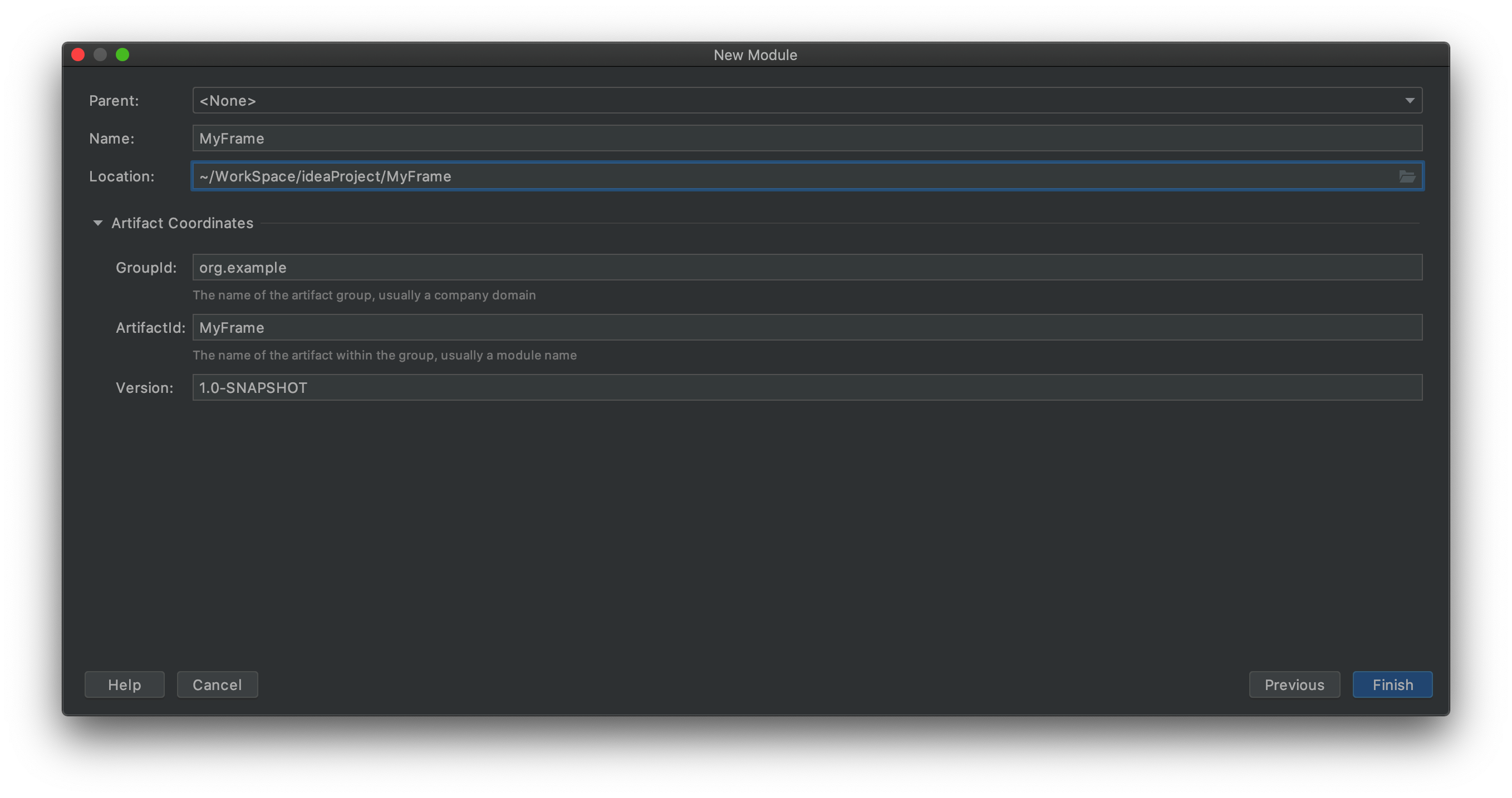

将MyFrame引入到MyFrame_test
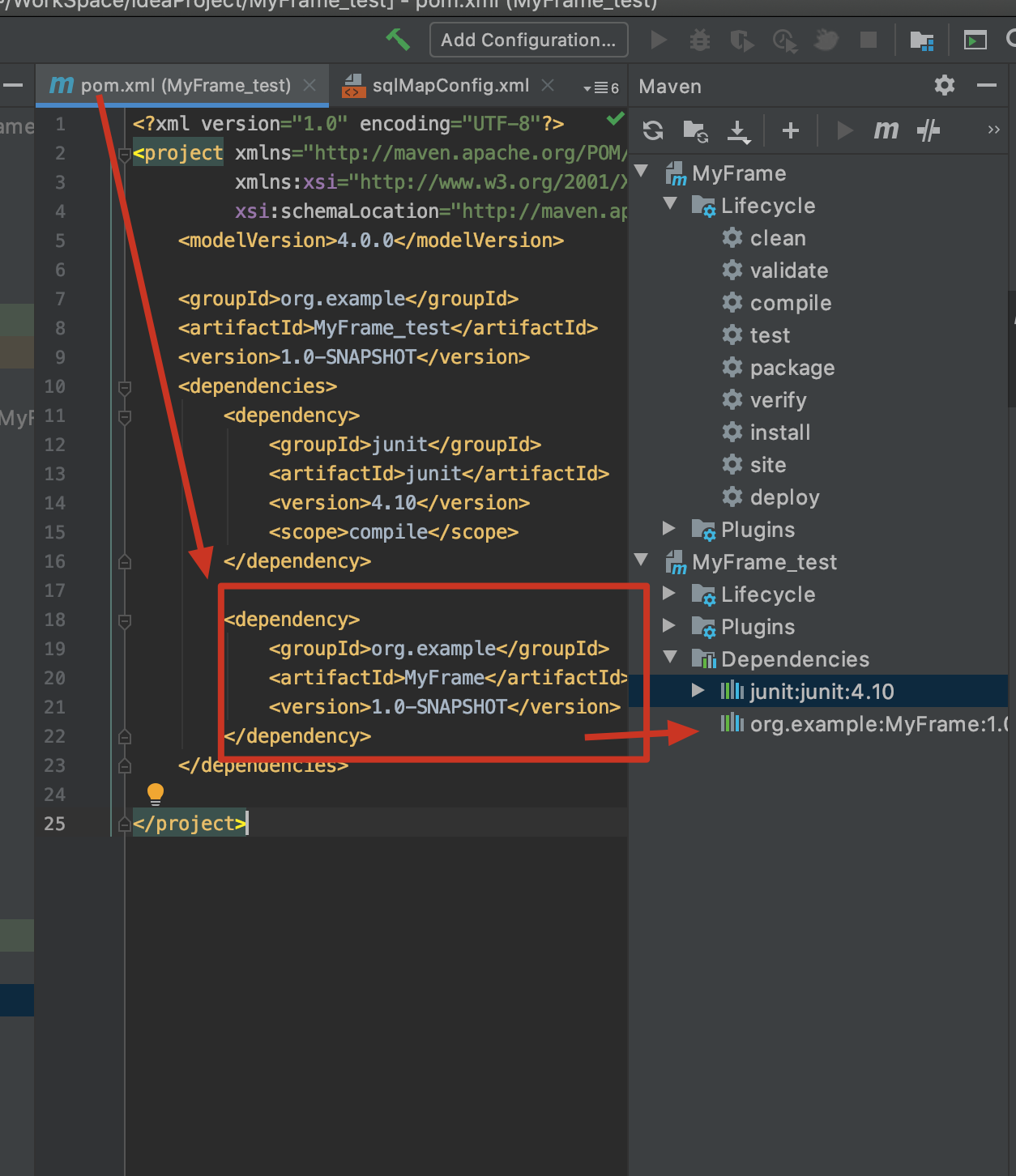
修改MyFrame下的pom文件添加依赖
<dependencies>
<dependency>
<groupId>mysql</groupId>
<artifactId>mysql-connector-java</artifactId>
<version>5.1.17</version>
</dependency>
<dependency>
<groupId>c3p0</groupId>
<artifactId>c3p0</artifactId>
<version>0.9.1.2</version>
</dependency>
<dependency>
<groupId>log4j</groupId>
<artifactId>log4j</artifactId>
<version>1.2.12</version>
</dependency>
<dependency>
<groupId>junit</groupId>
<artifactId>junit</artifactId>
<version>4.10</version>
</dependency>
<dependency>
<groupId>dom4j</groupId>
<artifactId>dom4j</artifactId>
<version>1.6.1</version>
</dependency>
<dependency>
<groupId>jaxen</groupId>
<artifactId>jaxen</artifactId>
<version>1.1.6</version>
</dependency>
</dependencies>
在MyFrame_test项目下的com.rick.pojo包下,创建一个Configuration类,用于存放数据库配置信息
public class Configuration {
private DataSource dataSource;
Map<String, MappedStatement> mappedStatementMap = new HashMap<String, MappedStatement>();
public DataSource getDataSource() {
return dataSource;
}
public void setDataSource(DataSource dataSource) {
this.dataSource = dataSource;
}
public Map<String, MappedStatement> getMappedStatementMap() {
return mappedStatementMap;
}
public void setMappedStatementMap(Map<String, MappedStatement> mappedStatementMap) {
this.mappedStatementMap = mappedStatementMap;
}
}
同样再创建一个MappedStatement类,用来存放存放SQL配置信息
public class MappedStatement {
//id标识
private String id;
//返回值类型
private String resultType;
//参数值类型
private String paramterType ;
//sql语句
private String sql;
public String getId() {
return id;
}
public void setId(String id) {
this.id = id;
}
public String getResultType() {
return resultType;
}
public void setResultType(String resultType) {
this.resultType = resultType;
}
public String getParamterType() {
return paramterType;
}
public void setParamterType(String paramterType) {
this.paramterType = paramterType;
}
public String getSql() {
return sql;
}
public void setSql(String sql) {
this.sql = sql;
}
}
在MyFrame项目下的com.rick.io包中创建一个Resources类,作用是:
根据配置文件的路径,将配置文件加载成字节输入流,存储在内存中
public class Resources {
/**
* 根据配置文件的路径,将配置文件加载成字节输入流,存储在内存中
*/
public static InputStream getResourcesAsSteam(String path){
InputStream resourceAsStream = Resources.class.getClassLoader().getResourceAsStream(path);
return resourceAsStream;
}
}
上面我们完成了第一步和第二部
接下来。我们开始进行解析
在MyFrame项目下com.rick.sqlsession包创建SqlSessionFactoryBuilder类
public class SqlSessionFactoryBuilder{
public SqlSessionFactory build(InputStream in) throws DocumentException, PropertyVetoException {
//第一:使用dom4j解析配置文件,将解析出来的内容封装到Configuration中
XmlConfigBuilder xmlConfigBuilder = new XmlConfigBuilder();
Configuration configuration = xmlConfigBuilder.parseConfig(in);
//第二:创建sqlSessionFactory对象:工厂类,主要生产sqlsession:会话对象
DefaultSqlSessionFactory defaultSqlSessionFactory = new DefaultSqlSessionFactory(configuration);
return defaultSqlSessionFactory;
}
}
然后我们来在MyFrame项目下的com.rick.config包中创建这个XmlConfigBuilder类
创建XmlConfigBuilder类
public class XmlConfigBuilder {
private Configuration configuration;
/**
* 先执行无参构造函数
* 相当于给Configuation赋值
*/
public XmlConfigBuilder() {
this.configuration = new Configuration();
}
/**
* 该方法就是使用dom4j将配置文件进行解析,封装Configuration
*/
public Configuration parseConfig(InputStream inputStream) throws DocumentException, PropertyVetoException {
Document document = new SAXReader().read(inputStream);
//configuration
Element rootElement = document.getRootElement();
// "//代表任意位置"
List<Element> list = rootElement.selectNodes("//property");
Properties properties = new Properties() ;
for(Element element : list) {
String name = element.attributeValue("name");
String valaue = element.attributeValue("valaue");
properties.setProperty(name, valaue);
}
//数据库连接池
ComboPooledDataSource comboPooledDataSource = new ComboPooledDataSource();
comboPooledDataSource.setDriverClass(properties.getProperty("driverClass"));
comboPooledDataSource.setJdbcUrl(properties.getProperty("jdbcUrl"));
comboPooledDataSource.setUser(properties.getProperty("username"));
comboPooledDataSource.setPassword(properties.getProperty("password"));
configuration.setDataSource(comboPooledDataSource);
//mapper .xml解析:拿到路径一一字节输入流一一dom4j进行解析
List<Element> mapperList = rootElement.selectNodes("//mapper");
for (Element element : mapperList) {
String mapperPath = element.attributeValue("resource");
InputStream resourcesAsSteam = Resources.getResourcesAsSteam(mapperPath);
XMLMapperBuilder xmlMapperBuilder = new XMLMapperBuilder(configuration);
xmlMapperBuilder.parse(resourcesAsSteam);
}
return configuration;
}
}
创建XMLMapperBuilder类
public class XMLMapperBuilder {
private Configuration configuration;
public XMLMapperBuilder(Configuration configuration) {
this.configuration = configuration;
}
public void parse(InputStream inputStream) throws DocumentException {
//拿到文档对象
Document document = new SAXReader().read(inputStream);
Element rootElement = document.getRootElement();
String namespace = rootElement.attributeValue("namespace");
List<Element> list = rootElement.selectNodes("//select");
for (Element element : list) {
String id = element.attributeValue("id");
String resultType = element.attributeValue("resultType");
String paramterType = element.attributeValue("paramterType");
String sql = element.getTextTrim();
MappedStatement mappedStatement = new MappedStatement();
mappedStatement.setId(id);
mappedStatement.setParamterType(paramterType);
mappedStatement.setResultType(resultType);
mappedStatement.setSql(sql);
String key = namespace+"."+id;
configuration.getMappedStatementMap().put(key,mappedStatement );
}
}
}
在MyFrame项目下的com.rick.session包中创建sqlSessionFactory接口及DefaultSqlSessionFactory
public interface SqlSessionFactory {
public SqlSession openSession();
}
public class DefaultSqlSessionFactory implements SqlSessionFactory {
private Configuration configuration;
public DefaultSqlSessionFactory(Configuration configuration) {
this.configuration = configuration;
}
@Override
public SqlSession openSession() {
return new DefaultSqlSession(configuration);
}
}
上面我们完成了第三步和第四步
创建SqlSession接口及实现类DefaultSession
SqlSession接口
public interface SqlSession {
/**
* 查询所有
* @param statementid
* @param params
* @param <E>
* @return
*/
public <E> List<E> selectList(String statementid,Object... params) throws Exception;
/**
* 查询单个
* @param statementid
* @param params
* @param <T>
* @return
*/
public <T> T selectOne(String statementid,Object... params) throws Exception;
}
DefaultSession类
public class DefaultSqlSession implements SqlSession {
private Configuration configuration;
public DefaultSqlSession(Configuration configuration) {
this.configuration = configuration;
}
@Override
public <E> List<E> selectList(String statementid, Object... params) throws Exception {
//要去完成对simpleExecutor里的query方法的调用
MappedStatement mappedStatement = configuration.getMappedStatementMap().get(statementid);
SimpleExecutor simpleExecutor = new SimpleExecutor();
List<Object> query = simpleExecutor.query(configuration, mappedStatement, params);
return (List<E>) query;
}
@Override
public <T> T selectOne(String statementid, Object... params) throws Exception {
List<Object> objects = selectList(statementid, params);
Object object = new Object();
if (objects.size() == 1){
object = objects.get(0);
return (T) object;
}else {
throw new RuntimeException("查询结果为空或者存在多个返回结果");
}
}
}
第五步完成
然后我们创建Executor接口及实现类SimpleExecutor实现类,主要执行的就是JDBC的代码了
Executor接口
public interface Executor {
public <E> List<E> query(Configuration configuration, MappedStatement mappedStatement, Object... params) throws SQLException, Exception;
}
SimpleExecutor类
public class SimpleExecutor implements Executor {
/**
* 其实就是JDBC的代码
*
* @param configuration
* @param mappedStatement
* @param params
* @param <E>
* @return
*/
@Override
public <E> List<E> query(Configuration configuration, MappedStatement mappedStatement, Object... params) throws Exception {
//1.注册驱动,获得链接
Connection connection = configuration.getDataSource().getConnection();
//2.(1)获取sql语句,因为存在#{}格式占位符不会被识别,还要进行(2)转换sql语句,转换成?形式的sql。并且对{}里面的值进行解析存储
String sql = mappedStatement.getSql();
BoundSql boundSql = getBoundSql(sql);
//3.获取预处理对象 preparedStatement
PreparedStatement preparedStatement = connection.prepareStatement(boundSql.getSqlText());
//4.设置参数
//获取参数全路径
String paramterType = mappedStatement.getParamterType();
//根据全路径获得class对象
Class<?> paramterTypeClass = getClassType(paramterType);
List<ParameterMapping> parameterMappings = boundSql.getParameterMappings();
for (int i = 0; i < parameterMappings.size(); i++) {
ParameterMapping parameterMapping = parameterMappings.get(i);
//解析出来的就是{}里面的值
String content = parameterMapping.getContent();
//使用反射
//获取属性对象
Field declaredField = paramterTypeClass.getDeclaredField(content);
//拿到对象的值,防止是私有的将参数设置为true,暴力访问
declaredField.setAccessible(true);
Object o = declaredField.get(params[0]);
preparedStatement.setObject(i + 1, o);
}
//5.执行sql
ResultSet resultSet = preparedStatement.executeQuery();
//6.封装返回结果集
String resultType = mappedStatement.getResultType();
Class<?> resultTypeClass = getClassType(resultType);
ArrayList<Object> objects = new ArrayList<>();
while (resultSet.next()) {
Object o = resultTypeClass.newInstance();
//获取元数据,其中包含字段的名称
ResultSetMetaData metaData = resultSet.getMetaData();
//metaData.getColumnCount()为列数
for (int i = 1; i <= metaData.getColumnCount(); i++) {
//获取字段名
String columnName = metaData.getColumnName(i);
//根据名称获取到对应的值
Object value = resultSet.getObject(columnName);
//使用反射或者内省,根据数据库表和实体的对应关系,完成封装
PropertyDescriptor propertyDescriptor = new PropertyDescriptor(columnName, resultTypeClass);
Method writeMethod = propertyDescriptor.getWriteMethod();
//把具体的值封装到对象中
writeMethod.invoke(o, value);
}
objects.add(o);
}
return (List<E>) objects;
}
private Class<?> getClassType(String paramterType) throws ClassNotFoundException {
if (Objects.nonNull(paramterType)) {
Class<?> aClass = Class.forName(paramterType);
return aClass;
}
return null;
}
/**
* 1.完成#{}的解析工作,使用?进行代替
* 2.解析出{}里面的值进行存储
*
* @param sql
* @return
*/
private BoundSql getBoundSql(String sql) {
//需要导入util工具类
//标记处理类:配置标记解析器来完成对占位符的解析处理工作
ParameterMappingTokenHandler parameterMappingTokenHandler = new ParameterMappingTokenHandler();
GenericTokenParser genericTokenParser = new GenericTokenParser("#{", "}", parameterMappingTokenHandler);
//返回一个解析过后的sql
String parseSql = genericTokenParser.parse(sql);
//#{}解析出来的参数名称
List<ParameterMapping> parameterMappings = parameterMappingTokenHandler.getParameterMappings();
BoundSql boundSql = new BoundSql(parseSql, parameterMappings);
return boundSql;
}
}
其中在com.rick.config包下还有一个BoundSql类,用来解析SQL。解析#{}这种占位符的sql变成?这种占位符的sql,并将{}里面的值解析存储
/**
* 解析#{}这种占位符的sql变成?这种占位符的sql,并将{}里面的值解析存储
* @author rickqi
*/
public class BoundSql {
private String sqlText; //解析过后的sql
private List<ParameterMapping> parameterMappings = new ArrayList<ParameterMapping>();
public BoundSql(String sqlText, List<ParameterMapping> parameterMappings) {
this.sqlText = sqlText;
this.parameterMappings = parameterMappings;
}
public String getSqlText() {
return sqlText;
}
public void setSqlText(String sqlText) {
this.sqlText = sqlText;
}
public List<ParameterMapping> getParameterMappings() {
return parameterMappings;
}
public void setParameterMappings(List<ParameterMapping> parameterMappings) {
this.parameterMappings = parameterMappings;
}
}
在解析sql的过程中,还需要在com.rick.utils中引入一些工具类
下面我提供一下整个自定义持久层框架的源码,可以进去自己找一下
https://ruiqi01.oss-cn-beijing.aliyuncs.com/uPic/自定义持久层框架.zip


